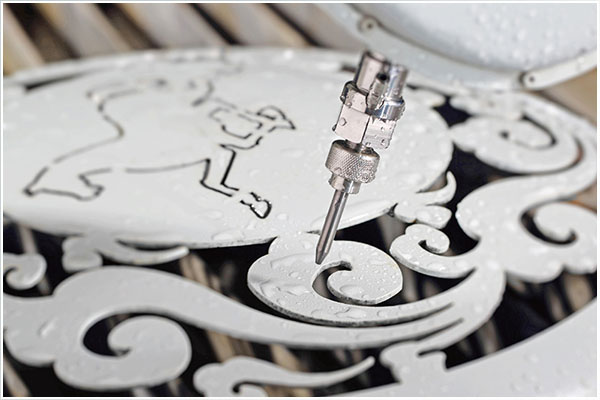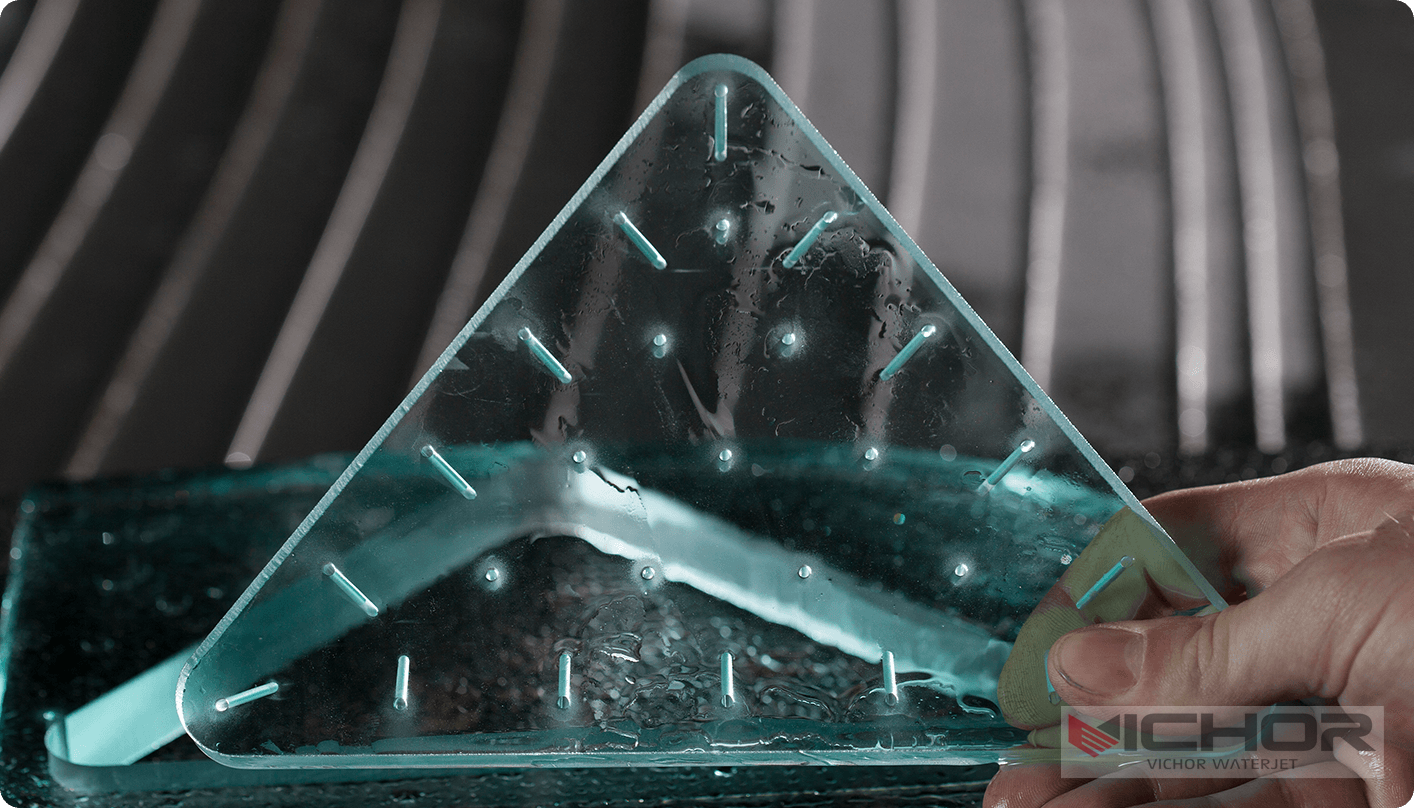
7 Key Benefits of a 5-Axis Water Jet: The Ultimate Guide for 2025
In the world of industrial manufacturing, precision is everything. But what happens when your materials are too delicate for lasers or too tough for plasma cutters? You turn to one of the most versatile tools available: the 5-axis water jet. This isn’t just an incremental improvement over older methods; it’s a paradigm shift in cutting technology. If you’re fabricating complex aerospace components, intricate architectural metalwork, or custom automotive parts, understanding the power of a 5-axis water jet system is no longer optional—it’s essential. This guide will walk you through seven compelling benefits, explore its diverse applications, and provide a realistic look at costs to help you make an informed decision. Let’s dive into why this technology is transforming workshops and production floors worldwide.
What Exactly is a 5-Axis Water Jet?
At its core, a 5-axis water jet is a computer-controlled cutting machine that uses an ultra-high-pressure stream of water, often mixed with an abrasive garnet, to slice through material. The “5-axis” designation is what sets it apart. Unlike a standard 3-axis machine that moves in a flat plane (X, Y, and Z), a 5-axis water jet adds two rotational axes (typically A and B). This allows the cutting head to tilt and rotate, approaching the workpiece from virtually any angle.
Imagine trying to cut a complex bevel on a pipe or create a perfect, tapered hole in a thick steel block. A 3-axis machine would struggle, leaving behind a characteristic “V” shape known as a kerf taper. A 5-axis water jet, however, can dynamically adjust the head’s angle to produce a perfectly square, taper-free cut on complex 3D contours. This capability to cut with such spatial freedom is the hallmark of true 5-axis water jet machining.
7 Unbeatable Advantages of 5-Axis Water Jet Technology
Why are so many industries adopting this technology? The benefits are both practical and profound.
Unmatched Geometric Freedom: This is the primary advantage. A 5-axis water jet can cut undercuts, complex bevels, and 3D contours in a single setup. This eliminates the need for multiple machines or repositioning the part, saving immense time and reducing error.
Elimination of Kerf Taper: The ability to tilt the head compensates for the natural V-shaped taper that occurs in high-pressure waterjet cutting. The result is parts with walls that are perfectly perpendicular and dimensions that are accurate through the entire thickness of the material.
A “Cold” Cutting Process: Unlike laser or plasma, a water jet generates no heat-affected zone (HAZ). This means the material’s structural integrity and inherent properties remain unchanged. It’s perfect for cutting tempered steel, composites, and materials that are sensitive to heat.
Extreme Material Versatility: From soft rubber and foam to hardened titanium and granite, a 5-axis water jet can cut it. It handles metals, stone, glass, ceramics, and composites with equal ease, making it a true one-stop shop for job shops.
Superior Edge Quality: The combination of taper elimination and the abrasive cutting action results in exceptionally clean edges. This often reduces or even eliminates the need for secondary finishing operations, like grinding or milling.
Environmentally Friendly: The process produces no hazardous fumes or gases. The primary waste, spent abrasive and water, can be managed and recycled with relative ease compared to other industrial waste streams.
Increased Production Speed: While the pure cutting speed might not always surpass plasma, the ability to complete complex parts in one operation drastically reduces total production time. Less handling and no secondary finishing mean parts get to the next stage, or to the customer, much faster.
Where is 5-Axis Water Jet Cutting Used?
The applications are nearly limitless. In the aerospace industry, it’s used for cutting titanium and aluminum components with complex contours and bevels ready for welding. The architectural and design sector uses it to create intricate patterns in marble, granite, and metal for stunning facades and interior features. Automotive and motorsports engineers rely on it to prototype parts from composites and cut high-strength steel brackets. Even the marine industry uses 5-axis water jets for precisely beveling thick steel plates for ship hulls.
5-Axis vs. 3-Axis: A Practical Comparison
Choosing between a 3-axis and a 5-axis water jet often comes down to part complexity and budget.
3-Axis: Ideal for flat, 2D parts where slight taper is acceptable or can be machined out later. It’s a more affordable entry point for standard cutting tasks.
5-Axis: Essential for any 3D contouring, beveling, or when taper-free edges are a critical requirement from the start. It represents a higher initial investment but pays for itself through reduced labor and secondary processing costs.
For a job shop taking on diverse projects, the flexibility of a 5-axis water jet often makes it the more economically sound long-term investment.
How to Choose the Right 5-Axis Water Jet Supplier
Selecting a machine is a major decision. Look beyond the price tag. A reliable supplier should offer robust after-sales support, comprehensive training, and readily available spare parts. Ask about the machine’s controller software—is it intuitive and powerful? Inquire about the pump’s reliability and pressure capabilities (often 60,000 psi or higher). Don’t hesitate to ask for customer references and, if possible, visit a facility where the machine is in operation. A trustworthy supplier will be a partner in your success.
Understanding the Cost of 5-Axis Water Jet Systems
The price of a 5-axis water jet system can vary widely, typically ranging from $200,000 to over $500,000. Several factors influence this cost:
Machine Size: The larger the cutting bed, the higher the cost.
Pump Power: Higher horsepower pumps capable of sustaining 90,000 psi will be more expensive than standard 60,000 psi models.
Control System: Advanced software and controls add to the price but also to the ease of use and capability.
Abrasive Delivery System: Automated systems are more efficient but cost more upfront.
Remember to factor in operational costs: electricity, water, abrasive garnet (a significant recurring cost), and routine maintenance on high-wear parts like the nozzle and focus tube.
The Technical Nuances of 5-Axis Machining
The magic of a 5-axis water jet lies in its dynamic head control. Advanced software calculates the optimal head angle for every millimeter of the cut path. This is not a simple process; it requires powerful CAD/CAM integration to translate a 3D model into the complex movements of the machine. The precision of the servos driving the rotational axes is critical for achieving the promised accuracy. Furthermore, operators must understand how to select the right abrasive, set the proper standoff distance, and manage the cutting speed for different materials to maximize the machine’s potential.
Frequently Asked Questions (FAQs)
Q1: What is the typical positioning accuracy of a 5-axis water jet?
A1: High-quality 5-axis water jet systems typically offer positioning accuracy within ±0.1mm to ±0.2mm. However, the final cut precision can be influenced by material type, thickness, cutting speed, and the sharpness of the consumables.
Q2: Can a 5-axis water jet cut any material?
A2: While exceptionally versatile, there are limitations. It struggles with tempered glass (which it shatters) and very hard, thick ceramics, which can be slow and expensive to process. Laminated materials can also delaminate if not cut carefully. However, it handles the vast majority of engineering materials effectively.
Q3: How does the operating cost of a 5-axis water jet compare to a laser cutter?
A3: A 5-axis water jet generally has a higher operating cost per hour due to the consumption of abrasive garnet and the wear on expensive nozzles. Lasers are faster and cheaper to run on thinner, non-reflective metals. However, the water jet’s ability to cut any material without a heat-affected zone and its superior 3D capabilities often justify the higher operational expense for specific applications.
Q4: What kind of maintenance does a 5-axis water jet require?
A4: Regular maintenance is crucial. Daily checks include inspecting the abrasive delivery system and water filters. Weekly tasks involve checking high-pressure seals. The intensifier pump requires periodic oil changes, and the cutting head consumables (nozzle, focus tube) need frequent replacement, sometimes multiple times per day under heavy use.
Q5: Is the programming for a 5-axis water jet significantly more complex than for a 3-axis machine?
A5: Yes, it is more complex. While modern software has simplified the process, creating toolpaths for 5-axis water jet machining requires a solid understanding of 3D CAD models and the machine’s kinematics. Operators need specific training to leverage the full 5-axis functionality effectively, unlike the relatively straightforward programming for 2D shapes on a 3-axis system.
continue reading




